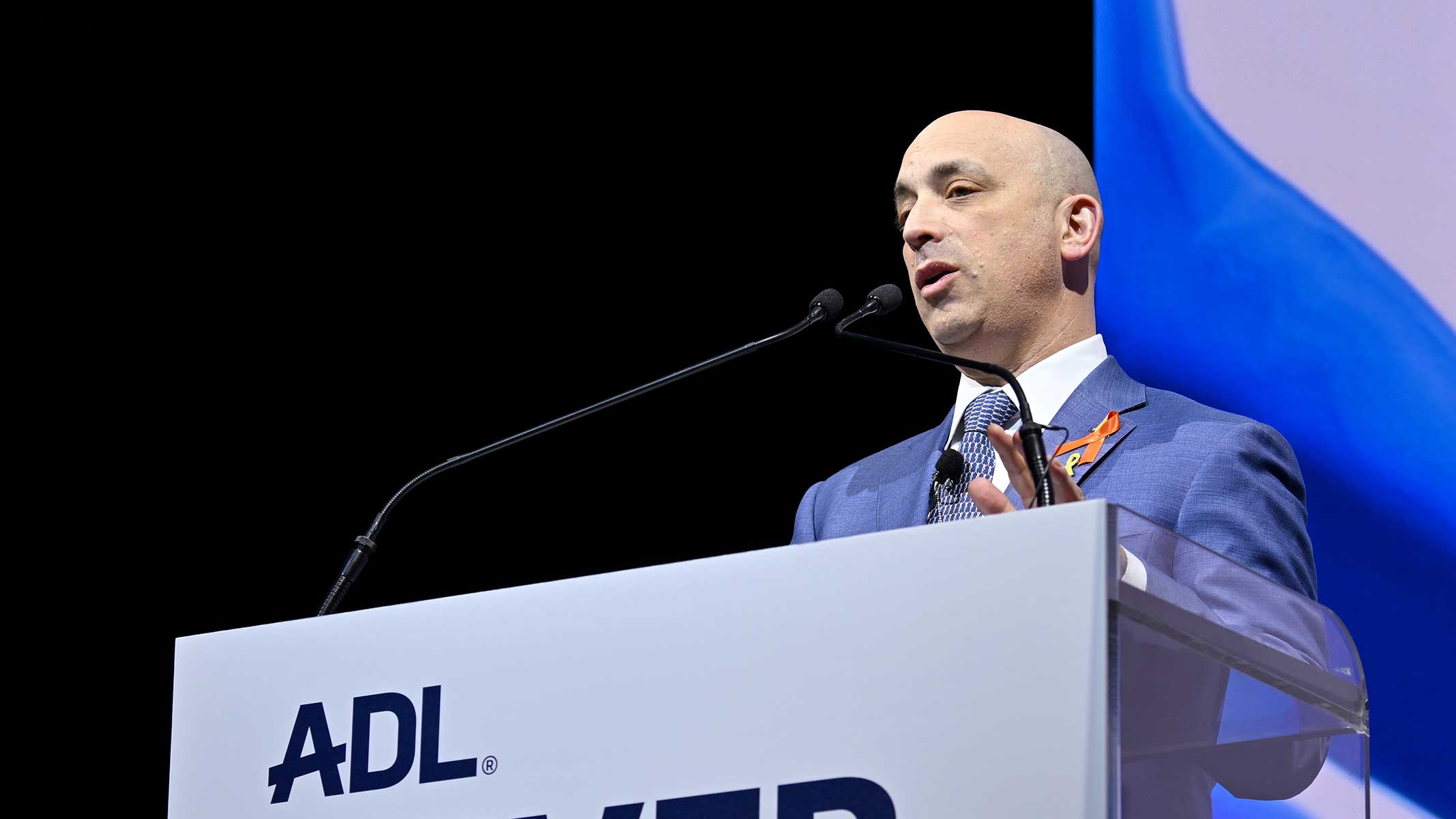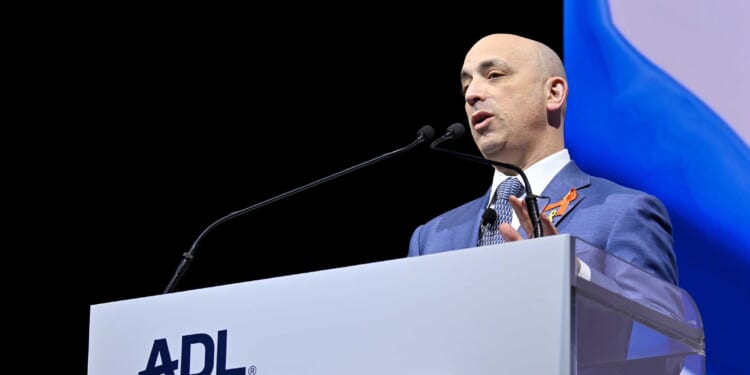
This essay first appeared at City Journal’s new Substack newsletter. If you want more like it, subscribe today!
For over a century, the Anti-Defamation League (ADL) has presented itself as the frontline defender of Jewish Americans. For decades it worked with prosecutors and police, using criminal law to make real-world harassment costly. Over the last generation, however, it has become a prestige “anti-hate” consultancy, focused on developing lesson plans around microaggressions, selectively handing down virtue-signaling edicts, and regularly congratulating itself for being on the right (i.e., left) side of history.
Finally, a reason to check your email.
Sign up for our free newsletter today.
Had anti-Semitism itself remained a peripheral prejudice, that evolution might merely have been disappointing. But anti-Jewish hate has surged since October 7, 2023, in the form of civil terrorism, street violence, targeted attacks, and the mainstreaming of conspiratorial figures on both left and right. The ADL’s approach—count incidents, denounce them, offer a free trip to the Holocaust museum—has proved worse than useless in response.
The ADL has recently faced significant criticism from the right—much of it fair, some of it not. FBI director Kash Patel’s announcement that the bureau is cutting formal ties with the organization marked a public crack-up. Patel’s point was blunt: the FBI should be a law-enforcement agency, not a client of left-wing brand managers.
Jonathan Greenblatt, the ADL’s chief executive and an Obama administration alum, seems to sense the shifting winds. He has praised, for example, the Trump administration’s use of funding leverage against universities that tolerated campus harassment. The group’s recent decision to pull down its massive online database, the “Glossary of Extremism and Hate,” also signals a changing tone.
But with the ADL under fire from the right and anathema to the left, these changes may not be enough to answer the core question: can the ADL—and should the ADL—be saved? The answer is maybe, but only if it drops the woke posturing; stops policing its should-be friends; and returns its focus to keeping its enemies at bay.
Commentary’s Seth Mandel has done an excellent job showing that the rot is not new. The story, as Mandel tells it, starts with Abe Foxman, the ADL’s leader for nearly three decades. Foxman was an old school civil rights operator. He saw the ADL as primarily a partner to law enforcement. He worked with Democrats and Republicans. And he treated anti-Semitism as a problem of concrete behavior to be deterred, not a cultural mood to be navigated with careful statements and sensitivity trainings.
But under Greenblatt, Mandel argues, the organization reimagined itself as a progressive NGO. It imported the DEI and CRT catechisms; recast “racism” in a way that sometimes made Jews invisible as victims; and wielded anti-Semitism as a partisan cudgel, quick to condemn the Right but circumspect when the Left peddled vicious anti-Israel dogma.
That latter hesitation has been especially damaging, because, as the anthropologist Adam Louis-Klein has argued, left-wing “anti-Zionism” is not a normal policy position. It is a comprehensive ideological system. Inheriting the logic of older anti-Semitic movements, it recasts Jews as the cosmic aggressor and makes support for Israel grounds for social and professional exclusion. An organization created to defend Jews from defamation has too often treated that defamation as just another opinion to be balanced against others.
This is all the more troubling because the primary danger to Jewish safety now comes from a red-green axis of hard-left activists and Islamist agitators. This group despises Jewish national identity and embraces lawlessness on campus and in the streets. Real but secondary is the danger that comes from a conspiratorial and ahistorical far-right fringe that imagines a “Zionist-occupied government” running the world.
Pretending these threats are symmetrical is suicidal. The number of prominent elected Republicans who have flirted with ZOG conspiracies could be counted on Jerry Garcia’s right hand. Across the aisle, Democrats came within a hair’s breadth of making a total arms embargo on Israel the party’s official position nationally. Zohran Mamdani—a committed leftist with apparent sympathies for radical Islamists—is poised to become the party’s national face.
An organization committed to defending Jews should recognize these threats and build coalitions with anyone willing to join that fight—even if they don’t share every cultural or social view. Yet the ADL, and much of the rest of the Jewish institutional world, has long refused to do so.
The assassination of Charlie Kirk—an outspoken philo-Semite—by an assailant “deeply indoctrinated with leftist ideology” should have been an opportunity to identify the nexus between anti-Semitism and left-wing radicalism. Yet the ADL had branded Kirk’s group, Turning Point USA, an extremist hate organization. If the ADL were a serious Jewish defense group, it might ask itself why it was more eager to police an ally’s rhetoric than to focus on the forces that motivated his killing.
Jewish groups recently made a similar failure of judgment in the United Kingdom. Tommy Robinson is a rough-edged British street populist who has generated more than his share of controversy. But he has also been one of the most vocal confronters of the Islamist intimidation that has made life dangerous for British Jews.
After Jihad Al-Shamie, a 35-year-old British citizen of Syrian descent, carried out his Yom Kippur slaughter of several Jews outside a Manchester synagogue, Israel’s diaspora minister invited Robinson for a visit. Some of the country’s left-leaning Jewish organizations erupted in condemnation. Leaving aside Robinson’s controversial politics, it’s telling that these groups directed more outrage at him than at the agitators threatening their own community and country.
The lesson in both cases is not that the ADL must embrace every provocateur who waves an Israeli flag. It’s that defeating a serious threat requires knowing the difference between imperfect allies and actual enemies—and having the discipline to build coalitions around shared priorities rather than hopelessly pursuing the intersectional allies groups like the ADL wish they had.
One person who appears to have grasped this is White House Deputy Chief of Staff Stephen Miller. Whatever else one thinks of him, Miller is the most influential Jewish policymaker in America. That’s because he has focused on the basic levers of civic security—border control, counter-jihadist vigilance, law and order—rather than trying to impress the Right’s critics. In so doing, he has kept the GOP’s pro-Israel majority onside, and avoided becoming a foil for the party’s small but noisy bloc of Israel skeptics and its fringe of anti-Semitic conspiracists.
The same point applies further down the food chain. The right-wingers who most effectively push back on both left- and right-wing anti-Semitism are scrappy, sometimes abrasive figures. Consider Mark Levin on the airwaves, or Dinesh D’Souza, Laura Loomer, and Will Chamberlain on social media. Or take Josh Hammer and Will Scharf’s 2023 “Jews Against Soros” campaign, which insisted—rightly—that condemning Jewish financier and philanthropist George Soros for the destructive causes he funds is not anti-Semitic but a mitzvah. In a more sensible world, the ADL would view its job as stiffening the spine of effective MAGA allies who, like them or not, are part of the same fight.
A serious Jewish defense organization also needs a bigger sense of what counts as a legitimate intra-coalitional argument. That means tolerating positions that make establishment leaders nervous, such as opposing legislation like the Anti-Semitism Awareness Act on civil-libertarian grounds, or questioning whether American aid to Israel serves either country’s long-term interests. I don’t share either view, but good-faith disagreement on them is obviously possible. These arguments can and do come from allies who want to make American Jewry and Israel more secure, not just from the people who want a global intifada.
Beyond allies, Jewish organizations also need to rethink their tactics. A recent episode at a Barstool Sports-owned bar in Philadelphia illustrates the point. Patrons ordering bottle service can ask staff to arrange a light-up letter board with a custom message—usually something tame, like “Go Birds.” But on one night in May, a customer instead asked for a “F*** the Jews” sign, and the staff obligingly held it up as he chanted the curse on video.
Barstool’s founder and president, Dave Portnoy—himself Jewish—fired the employees on the spot. Then, after talking to the usual polite, center-left professional anti-Semitism consultants, he offered the culprits an all-expenses-paid trip to Auschwitz. Within a day, one of them pivoted to denial and self-victimization, and Portnoy rescinded the offer. The man has since reinvented himself as a full-time online anti-Semite.
The whole sequence was a live demonstration of an argument that academic Ruth Wisse has made for years. The ADL and likeminded organizations have sunk untold financial resources into Holocaust education. The idea that you can educate the hate out of people by taking them on Holocaust tours is not just naïve but counterproductive. It obscures the political nature of anti-Semitism and substitutes symbolism for deterrence.
If universalizing Holocaust education is a bad idea, what should Jewish institutions be doing? The old ADL model—rooted in law-enforcement partnerships, deterrence, and unapologetic civic defense—is the best answer. The job of a serious defense organization is to make it dangerous to menace Jews, not to invite the menacers to pose for photo-ops at memorials to Jewish massacres.
American Jewry also has an under-utilized capacity to strengthen itself. As Dan Senor has argued, investments in day schools, summer camps, and Israel gap-year programs build the next generation’s competence and confidence as Americans and as Jews. Those are the kinds of institutions that fortify a community from the inside out.
The question, then, is not only whether the ADL can be reformed. It is whether the enormous sums raised in its name would be better spent on efforts that actually deter threats and build strength, rather than on press-release activism and bureaucratic self-perpetuation.
There is a recent precedent. A decade ago, the American Israel Public Affairs Committee (AIPAC) still styled itself as a bipartisan convener. It was famous for its annual Washington policy conference featuring presidents, Republican and Democratic congressional leadership, and foreign dignitaries. But after its defeat in the Obama-era Iran deal fight, it abandoned that civic-pageant model and refocused on hard-edged political combat.
AIPAC now pours resources into primaries on both sides of the aisle to defeat anti-Israel candidates and bolster reliable allies. That strategic pivot, run largely through an affiliated super PAC, has been enormously successful.
Can the ADL make a similar turn? Organized Jewish life now faces a choice. Either salvage and refocus the institution—abandoning moralistic branding exercises and returning to deterrence, coalition-building, and policy work rooted in political realities. Or accept that the ADL is too compromised to be redeemed and instead invest in what we know works: electoral fights that shape who holds power and community investments that shape the next generation’s ability to hold its own.
The age of the left-leaning prestige NGO is over. The choice now is between doubling down on what works or wasting scarce resources on what plainly doesn’t.
Photo by Bryan Bedder/Getty Images for Anti-Defamation League
Source link


















